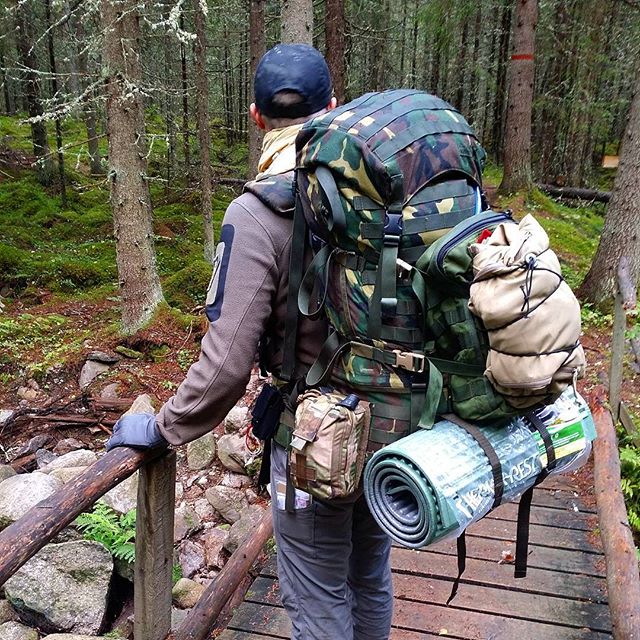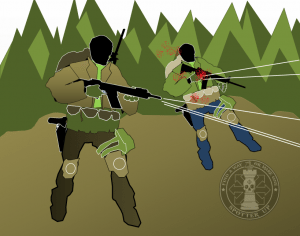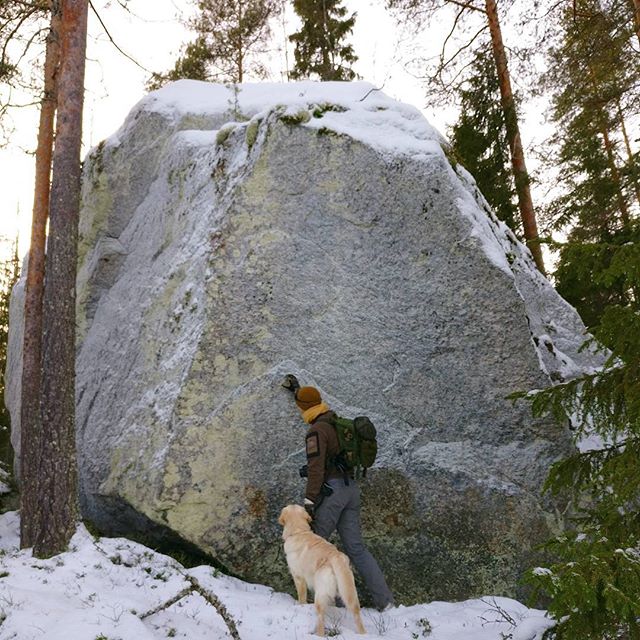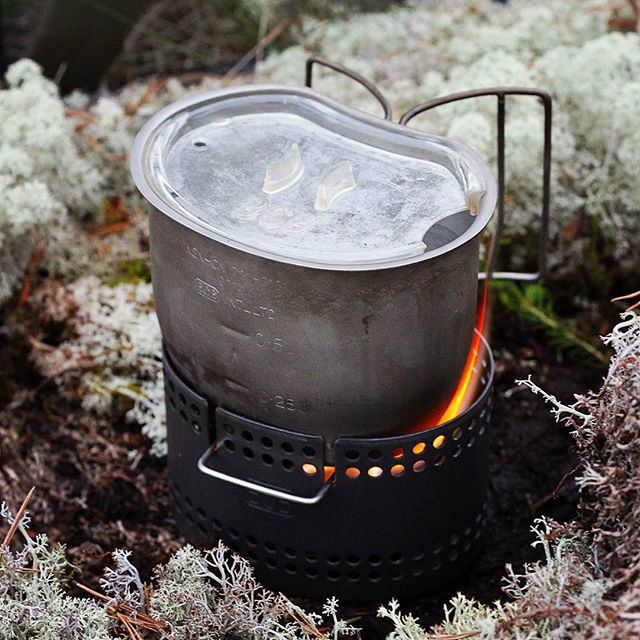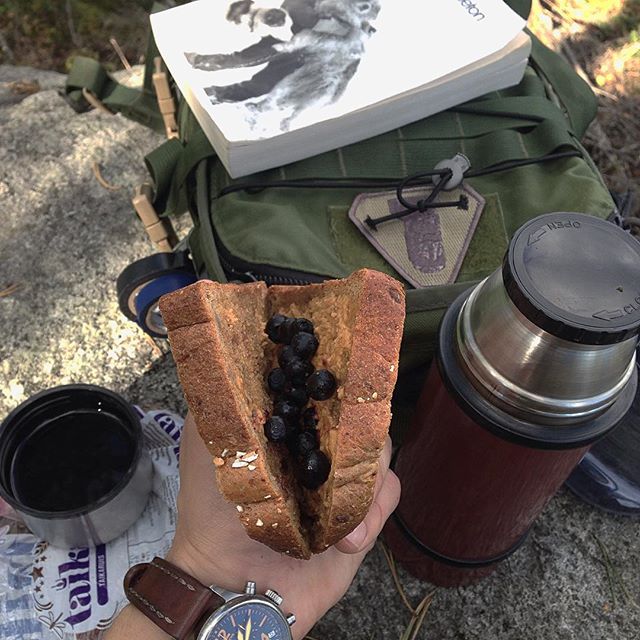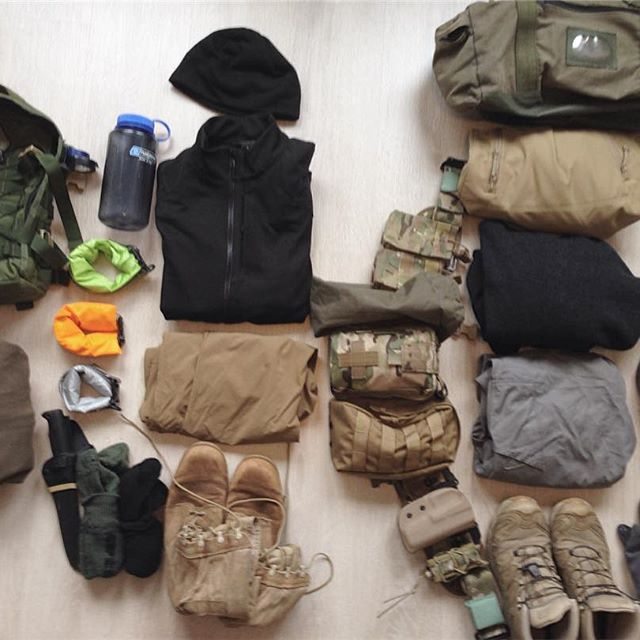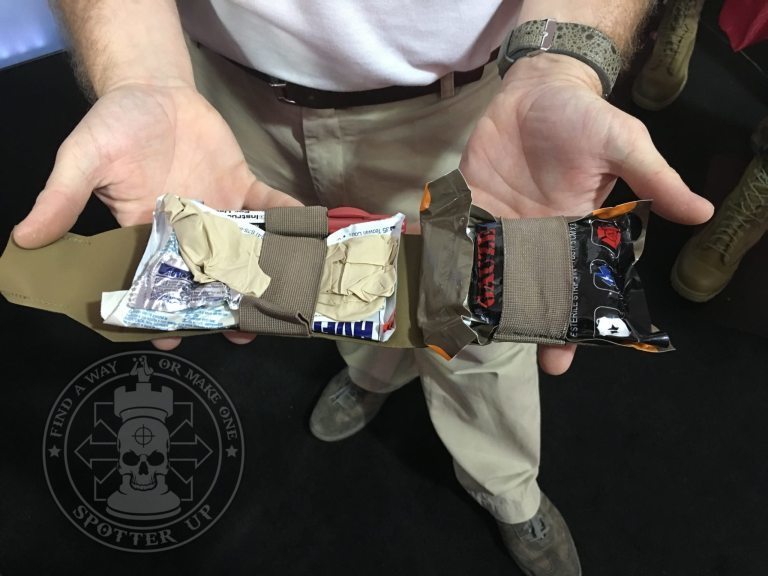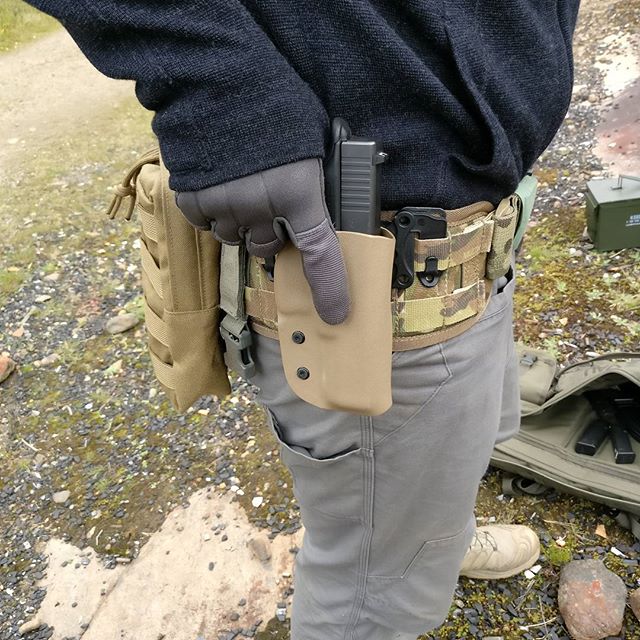Get Home Bag.
Lots of articles are written about keeping Bug Out Bags in your home, just in case disaster strikes. Now the public is becoming very aware of the need for Get Home Bags. What is a Get Home Bag? Typically, a Bug Out Bag requires that you can survive from it for up to 72 hours. A Get Home Bag is not as comprehensive as your B.O.B. It’s a less hefty survival bag that you should have ready to use just in case a disaster happens. There’s going to be some overlap with a B.O.B. Whatever you choose, know that a G.H.B. will be lighter and smaller and contain tools for one planned purpose of getting you out of danger and on your way home.
Do not rely on government agencies to provide immediate aid and relief. We’ve already seen in the news how people have had to rely on family, friends or themselves at times. The government may be stretched thin handling the needs of others, or just too plain slow to be reactive. Be proactive and try to have one cached at your office or place of work.
How Big?
As for bags sizes, you can use whatever bag you want. It can be a military Load Bearing Vest with a pack attached, a Duffel-Bag, or even a small back-pack. The important thing is for it to be light in order to let you travel fast, yet it contains certain essential items. You don’t want to carry everything and the kitchen sink on your back so we’ve prepared a list of items to pack.
A typical B.O.B. is designed to sustain one person for three days on the move. The G.H.B. is smaller and lighter. It’s simply intended to get you from wherever you happen to be when a disaster strikes, presumably back to your home, and to the rest of your survival preparations.
The content of the G.H.B. depends on your situation, your region, and how long it may take you to travel to your home. You may need a pry bar to open doors if you work in a building hit by an earthquake. You may need more water if you work outdoors and a wildfire encircles your region. I know people who live a 5 minute drive from their place of work and can easily hike home on foot. For me, I would have to hike for about 10 hours if I had no disruptions from wild animals, threatening people, and accidents to avoid.
Think about this:
What if disaster strikes when you’re at work? How about if you’re on the road? What happens if something like 9/11 occurs one more time? Thousands of these people had a difficult time getting home.
Try walking 57 blocks in a business suit and dress shoes. You could do it but it won’t be easy. Your job of traveling and climbing stairs or obstacles is going to be more easily accomplished in athletic shoes or walking boots. When trouble happens you need to snap into action mode. And if a disaster like a tornado, blackout or other emergency happens you just might have to shelter in place.
What do you do and where do you go?
Let’s say you work in an industrial area of a city. Even if you’re wearing comfortable overalls and construction boots, you still need to get out of the danger zone. Hurricane Sandy affected millions in the city zones like New Jersey and New York. Many people were improperly prepared to travel. You want to be able to utilize the items in your Bag until disaster relief and emergency management offers help if you need to ‘hunker’ down.
What kind of disaster can happen?
Earthquakes and wildfires can cut you off and delay a straight route home. A power outage can cause urban flooding especially by shutting down pumping stations; especially in subsurface areas. You name it, and this disaster has happened before and could happen again. Dam or levee failures, radioactive incidents such as in Japan, or an airplane crash in your area. If entire buildings are destroyed, reference points can be eliminated because all that’s left are piles of rubble. How do you travel through it? How do you travel around it?
Where do you live and where do you work?
I did a lot of traveling overseas and for a time I lived in a densely packed urban area and worked in a coastal village that was only reachable by ferry. Depending on the day of the week, I would either walk or run 15 miles along narrow, tree-lined, country roads to the ferry while carrying my fast pack.
Once in the city I would hitchhike the last 5 miles home. Many times it was just the cows as me. I’m certain I could have located help if needed. I could go for hours without ever seeing a car or person.
Though I was familiar with England and Ireland, for example, I was never truly as comfortable or knowledgeable of my true place of home, America. Finding my way around London and seeking help is a far cry from doing it in Bombay, especially for a non-native speaker. So many scenarios can occur abroad. How about an act of war or a terrorist attack? Try getting help in a country where English is not the primary language spoken.
As travelers and tourists we may be abroad for a month or more. Depending on what region we’re at, we need to tailor the size of the bag and the contents. A good friend of mine was working as an engineer in India for a year. During a massive protest after Pakistan began to get nukes he was confined to his remote work site and threatened with death, he got deathly ill and lost a lot of weight but was still able to eat what he had packed. When it was safe to go, he made it back to his hotel and held out until he made panicked arrangements to go home. He is glad to have survived but told me he would never travel to a third world nation again.
Keep a Get Home Bag somewhere in your office or near your desk.
HYDRATION
Water: US recommendations are a gallon a day. At a minimum carry 1 liter in your pack. A metal container with a metal cup is great for boiling water. I carry a case of water in my vehicle, have tons of it stored at home and am never without hydration when I’m outdoors.
NUTRITION
Food: Pack half a dozen energy bars. There are plenty of choices of high calorie nutrition bars, and emergency rations, at many health food stores and survival/tactical shops. You might want to pack a little bit of fun food to keep your morale up such as granola, flaked coconut, pumpkin or sunflower seeds. Even dried raisins, cherries, apricots are a good, sweet, and healthy treat and don’t take up too much room.
My wife keeps loads of healthy bars at home and I always have something extra on me to share with others. There are lots of choices on the market.
I always go for something that’s healthy and has natural products and recommend buying something you’ve tried before. You don’t want to purchase bars, pack them away and then find out you can’t stomach the taste.
BODY TEMPERATURE
Clothing: Pack away something durable and suited for your region. Light-weight or heavier clothing, hat and gloves.
Walking Shoes or Hiking Boots: Wool socks by Thorlos are a good addition. Good footwear keeps your feet from getting really cold. You may have to cross cold streams.
Baseball Cap or Boonie Hat: A good head-covering reduces your head exposure to the elements. You definitely want something to protect your lips, nose and ears from the sun or cold.
Durable Gloves:I like the rappelling gloves because the palm has additional padding on it. I also have a pair of insulating gloves that keep my hands warm because our winters are very cold. Also, during a disaster you may have to climb rubble or chain link fencing. Some inexpensive, leather models retail for $10.00.
Bedding: Mylar blankets are compact and they are affordable. Not only can they be used to keep out the hot sun, but you can use it as waterproofing from rain.
MEDICINE AND HEALTH
Prescription Medicine: Carry enough to last an extended evacuation period.
Basic first aid-kit: With Tylenol, aspirin, sunscreen, lip balm, bandages, gauze pads, tweezers, medical tape, and moleskin. (I’ve had to use everything listed). I’ve seen kits for $20.00 bucks but this is pointless to spend so much money. A ziplock bag will allow you to begin making your own. Just go around the house and gather up the things you need to make your own.
SANITATION
Hand sanitizer, a few wet-wipes.
Toiletry Kit: Includes a small towel, toiler paper, toothbrush, toothpaste, and soap. Lots of shops carry the hotel-sized, mini soap bars and small toothpaste tubes.
COMMUNICATION
Battery operated radio: I’ve seen a radio listed as cheap as $9.99 and it worked!
Signal Mirror: I purchased a cheapo for $1.64.
Paper, pencil and a permanent marker: For many uses! Marking a location on the map, leaving information on a community board, drawing on a wall, etc.
Whistle: In case you need to signal to someone.
NAVIGATION
Lighting: A cheap lighter, and flashlight. Years ago, my riding buddy bought me a hands free Petzl headlamp for riding through the woods at night. I gave it to my son, and years later it still works.
Signal Mirror:
Map: Your map should include the location of safe havens, rally points with friends or family and emergency centers near your area. If these locations aren’t marked on your legend, be sure to add them: Hospitals, police stations, fire departments, government buildings, schools, public venues with security, airports, United States/allied units or corporations. Try to come up with more than one route to your destination.
Also list support centers: Medical clinics, fuel stops, and restaurants.
Compass
Emergency literature kept for referencing.
PROTECTION
Bandana, Shermagh or a simple face mask. Depending on your situation and the weather it can keep away dust, debris and protects your lungs from junk.
Baseball Cap or Boonie Hat: To prevent sunburn and reduces your face exposure to heat or cold.
Walking Shoes or Hiking Boots: Wool socks like Thorlos are a good addition. Good for crossing rough terrain.
Knife.
Rain poncho or a tarp: For traveling purposes a small-sized model works. They vary in price between $5.00 and $10.00.
Firearms and enough ammunition if you’re able. If you’re able to keep it at work, then do so. A small pistol is ideal. Thankfully I wear a gun when I’m working or not. Hopefully you can stow one away.
Pepper Spray: Use on animals or humans.
TOOLS
Duct Tape and Paracord: Handy for everything! You may need to rescue someone or retrieve an important item necessary for your survival.
Cash and change: Electronic banking transactions may not be available during the initial period following an emergency or evacuation. Keep enough on hand to buy fuel, food, medicine etc.
Multi tool: Lots of good choices on the market.
Backpack: Look for durable and build for storage multiple items.
Conclusion
- Create something that fits your personal needs. Do you need a heavier jacket or sturdier shoes for mountainous terrain?
- Focus on continually improving your survival skills and make adjustments to your GHB gear as time and money permit.
- Don’t carry a fridge on your back.
- Get to know your neighbors as well. This way you can pitch in together to gather news, manage your homes and minimize the stress and work that needs to be done if a disaster occurs.
- You Don’t have to buy the most expensive gear. There are lots of great products out there but you have to scout them out.
- At a minimum, pack to survive for 24-48 hours, keep around a first aid kit, food, water, a map light jacket and shoes or boots. The idea is expediency in travel. At a minimum, have something ready to go, and continually refine your equipment for future events.
If you enjoyed this article please LIKE and SHARE
Most images from Noble & Blue

